Rear Windows
January 2023 - November 2023
Funded by the Arts Council Northern Ireland
Undertaken as X||dinary Stories with Eleanor Dare and in collaboration with Big Telly Theatre Company
During COVID lockdowns, Big Telly theatre company presented 17 performances on Zoom and were interested in working with X||dinary Stories to understand the potential of everyday gaming platforms and immersive environments to extend their online performances into new spaces with different mechanics.
Thus, the remit of this project was to co-develop, through a series of public engagement workshops, an online interactive and immersive performance based on a modern adaptation of Alfred Hitchcock’s 1954 thriller Rear Window that would critique AI.
With co-produced digital/ physical assets, music and scripts, the performance, which was shown as part of the Belfast International Arts Festival, took part in three acts that each used a different aspect of the online platforms Zoom and Mozilla Hubs, to allow audiences to be immersed and engaged with:
What happens to the minor characters after Hitchcock’s film ends?
Where do you draw the fine line between watching others and something less innocent?
What would you do if you saw something you shouldn’t have seen?
Who’s watching you and who are you watching?
Act 1
Act 1 took place on Zoom and set the context for the following two acts. The act begins with an AI generated advert for Rear Windows Glazing Company and then switches to Bev (played by Rhiannon Morgan) and Janice (played by Sorcha McElroy) two of the company’s employees. They are looking out of their offices into the windows of the buildings that surround them, commenting on lives unfolding. We are introduced to the composer (played by Cathan McRoberts), one of the minor characters in Hitchcock’s film. Simultaneously, someone is smashing the windows of their company.


 Images: Act 1 (Actors: Rhiannon Morgan, Sorcha McElroy and Cathan McRoberts)
Images: Act 1 (Actors: Rhiannon Morgan, Sorcha McElroy and Cathan McRoberts)During the act, we made use of Zoom affordances, such as altering the virtual backgrounds to be in keeping with the play and highlighting the actors. Each performance also had three additional actors who formed part of the audience and helped set the tone for how the wider audience interacted with the different aspects of the technology. These actors altered each performance to enable Big Telly to get feedback from a wide range of people about the potential of gaming platforms to online theatre.
Act 2
Act 2 took place in Mozilla Hubs and the audience was asked to join Janice, Bev and the Composer. Together we searched for clues in two spaces, one belonging to Bev and the other to the Composer, to find out who had been smashing the Rear Windows’ windows. In doing so, we experimented with the affordances of the virtual space that allow audiences and actors to have an avatar, fly, walk through walls and even under the “stage” as well as make ducks and throw out virtual emojis.
The props and clues in the Mozilla Hubs space included provocations around AI in relation to the arts, such as the Composer having his contract terminated as the company were now using AI generated music. There were also references back to the original Hitchcock film.


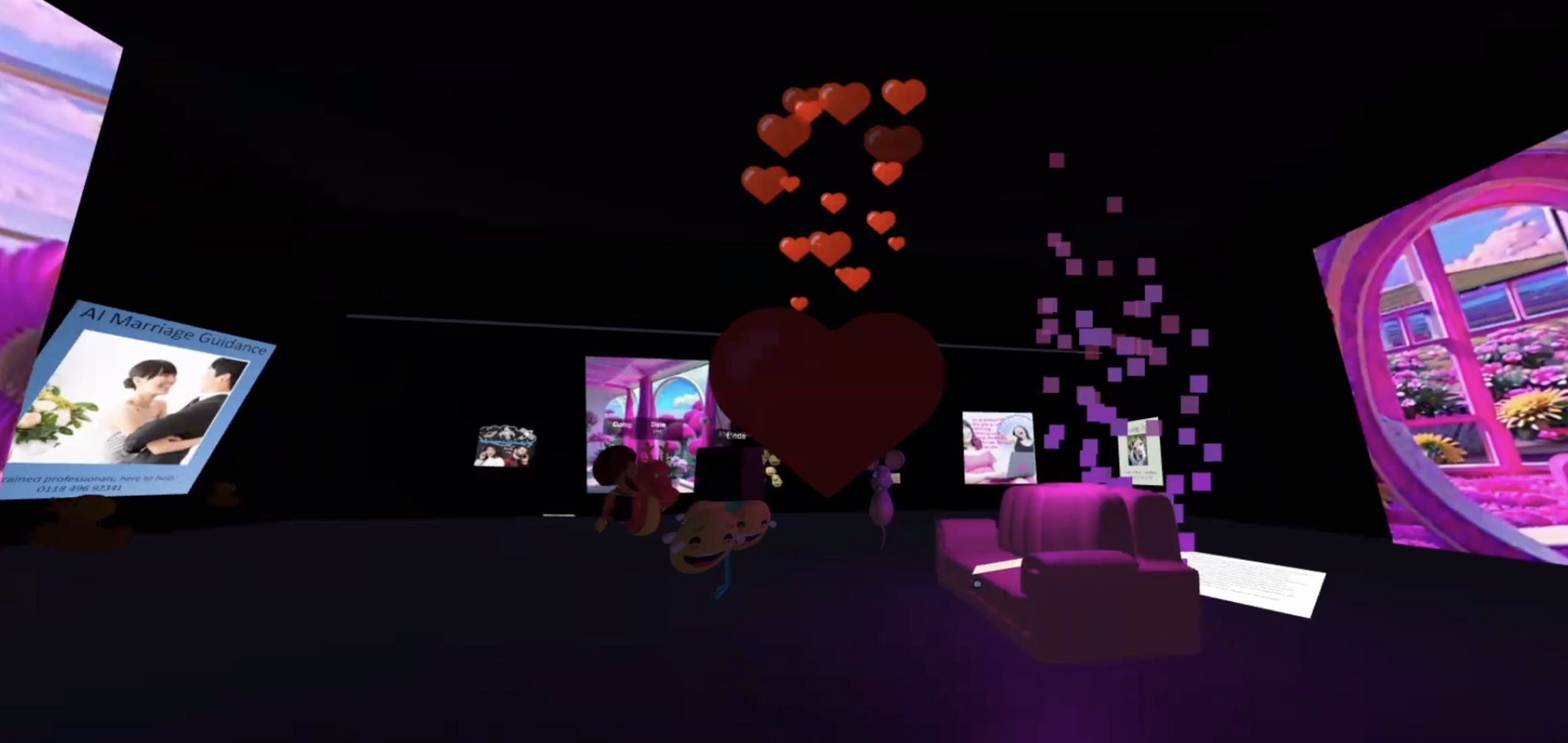
 Images: Still from Act 2
Images: Still from Act 2Act 3
In the third act, the audience and characters return to Zoom, to take part in a jury deliberation about who they think has been smashing the windows.

When the police are eventually called it turns out to be an automated service, slowly all members of the cast and production team change their Zoom names to “REPLACED” and turn off their cameras, a provocation to consider the implications of AI further.
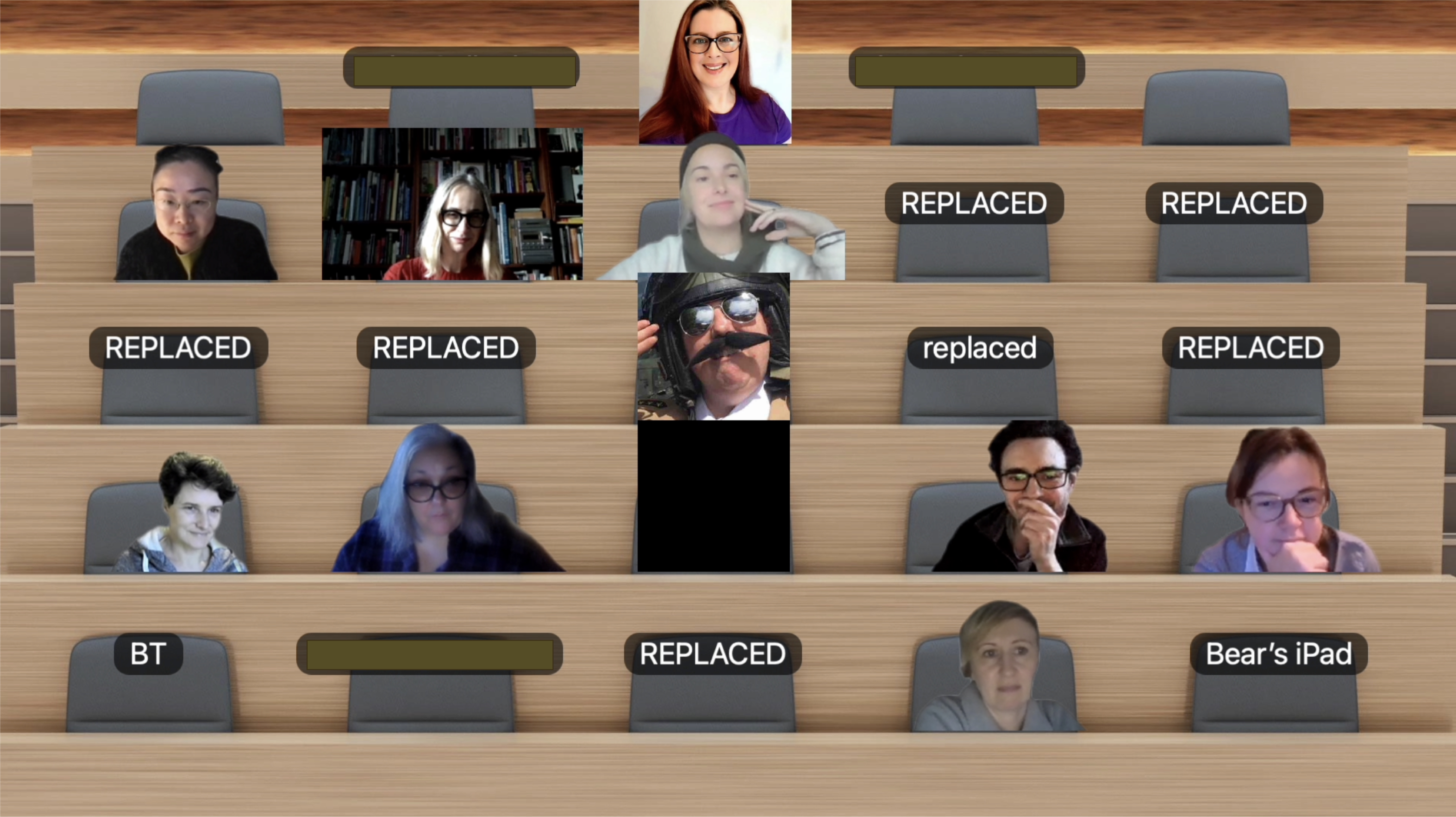
The Programme
The intention of the programme was to allow the audience to prepare for the performance in a way that would make it more interactive for them. It also contained a comic version of the script which combined AI generated images with hand-drawings. This was intended to highlight how analogue methods of making could step up to confront current AI generated art, and the need to combine analogue more regularly with digital making to remain critical of affordances and aesthetics of technologies.


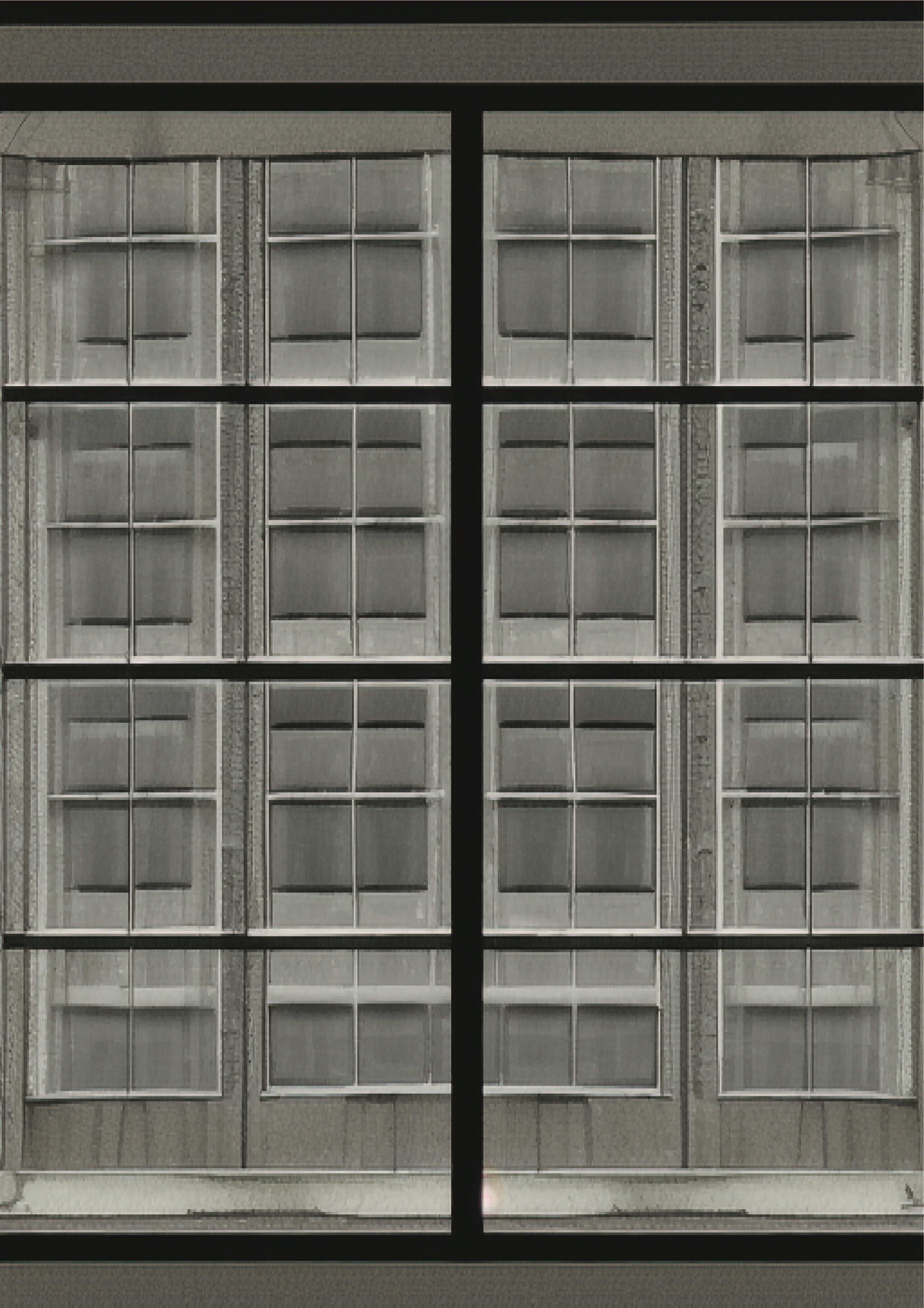
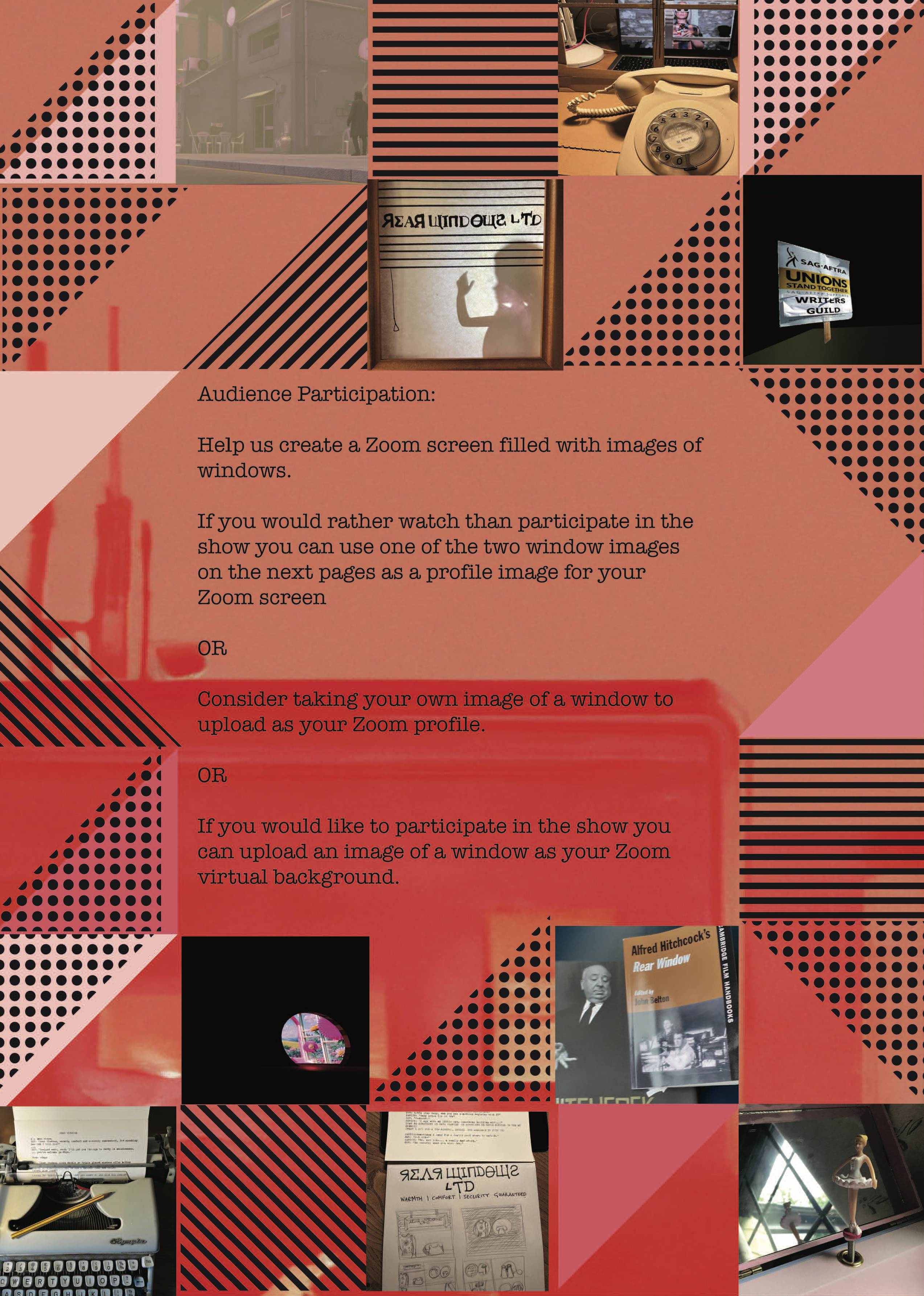
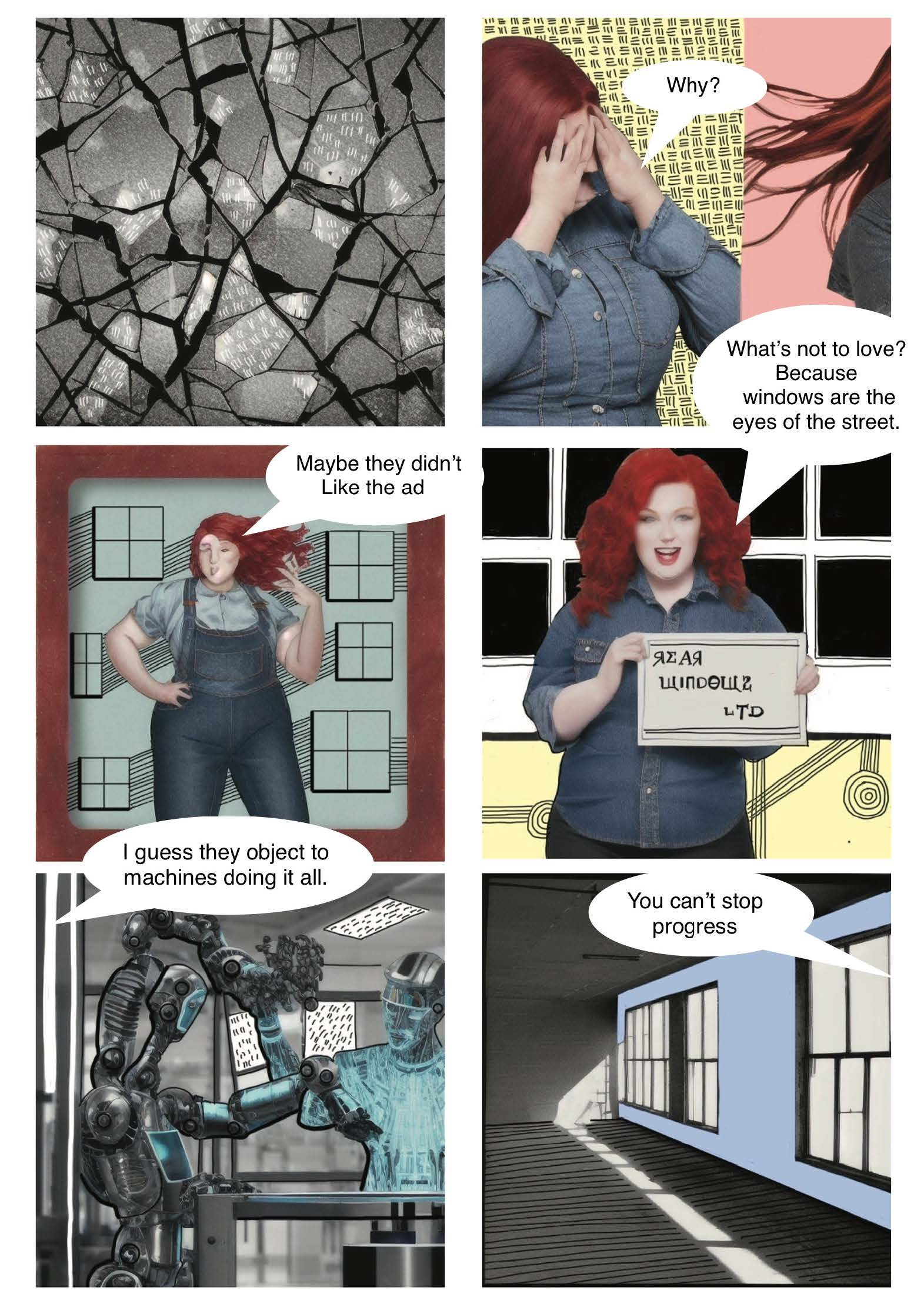

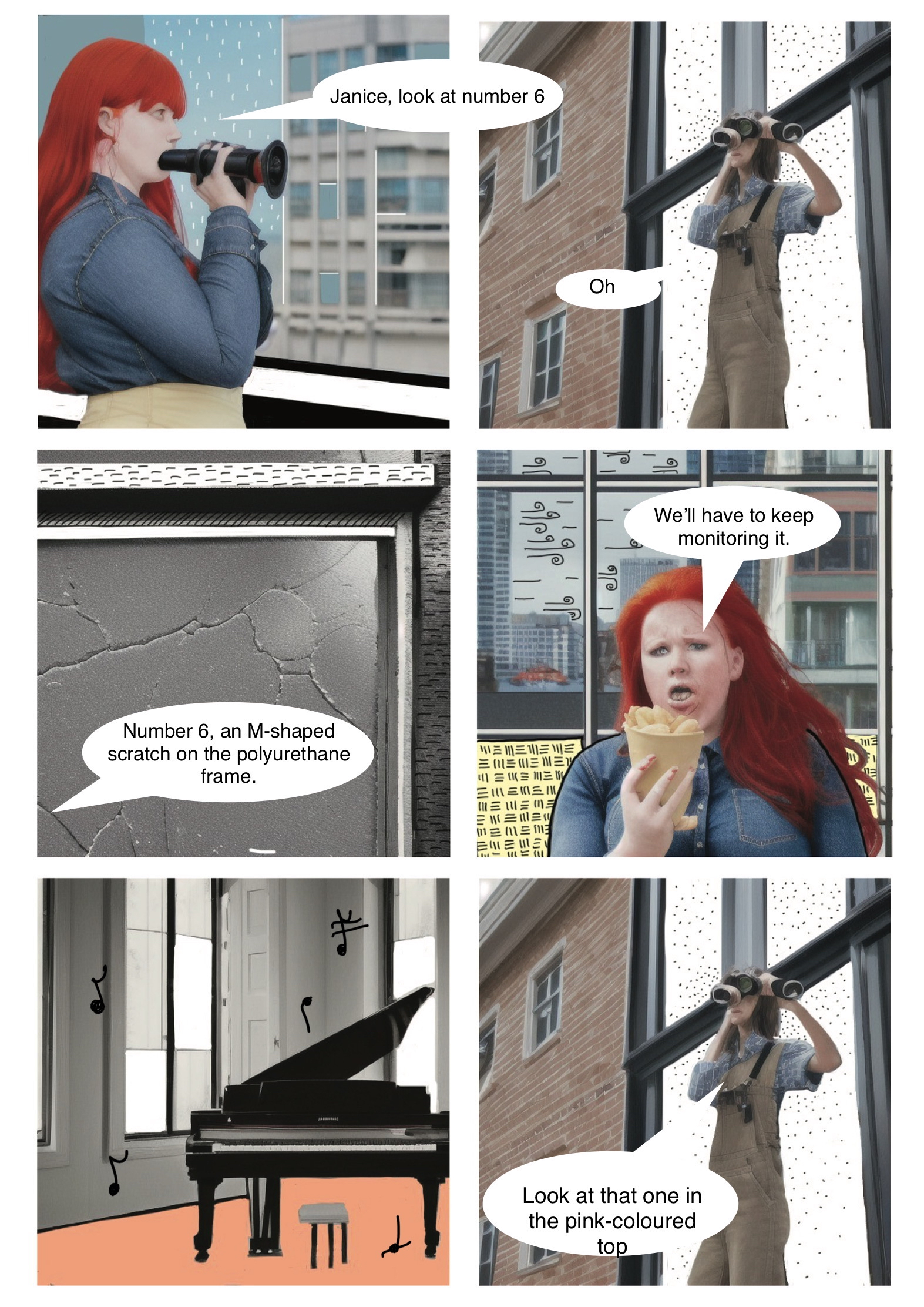

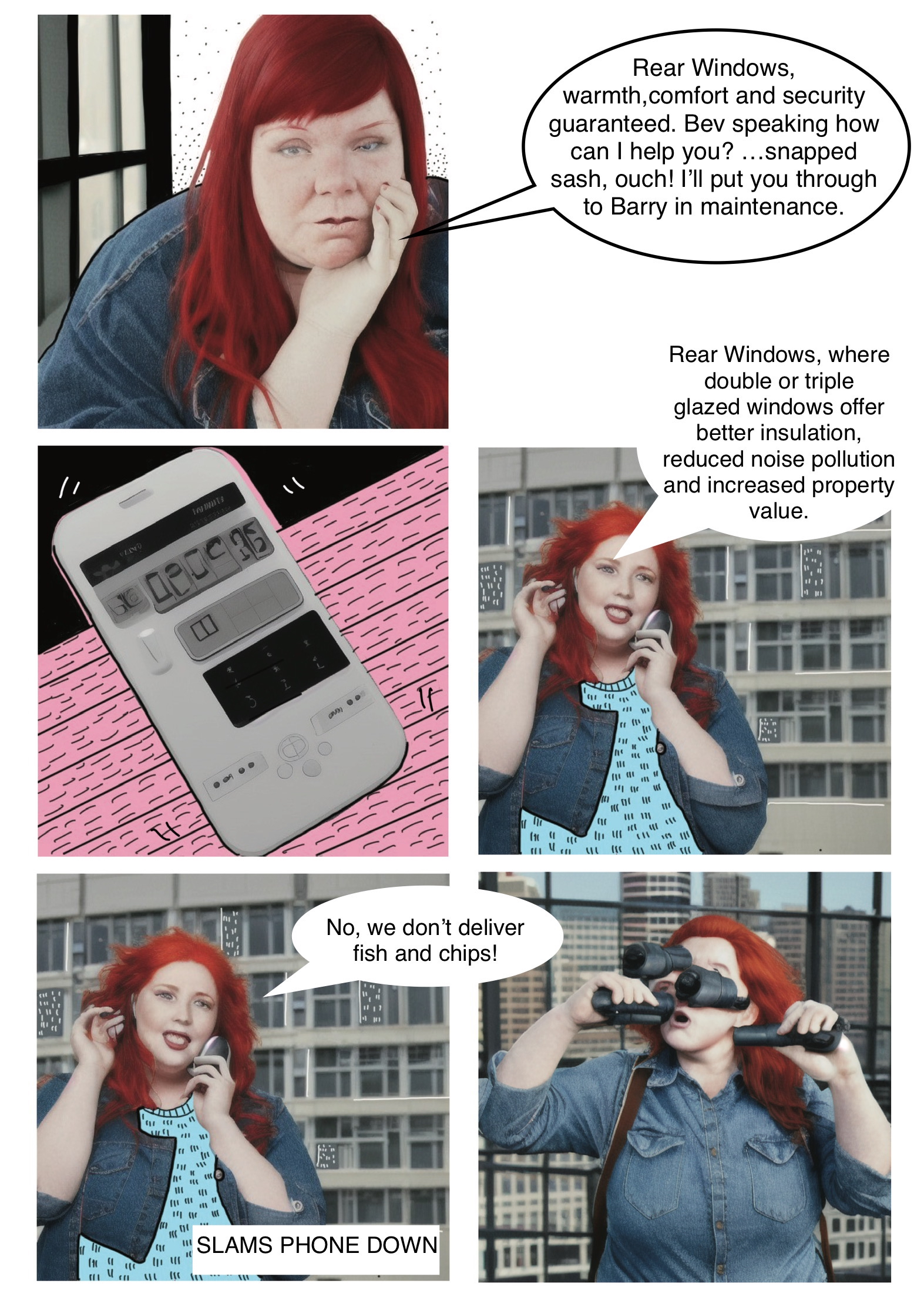
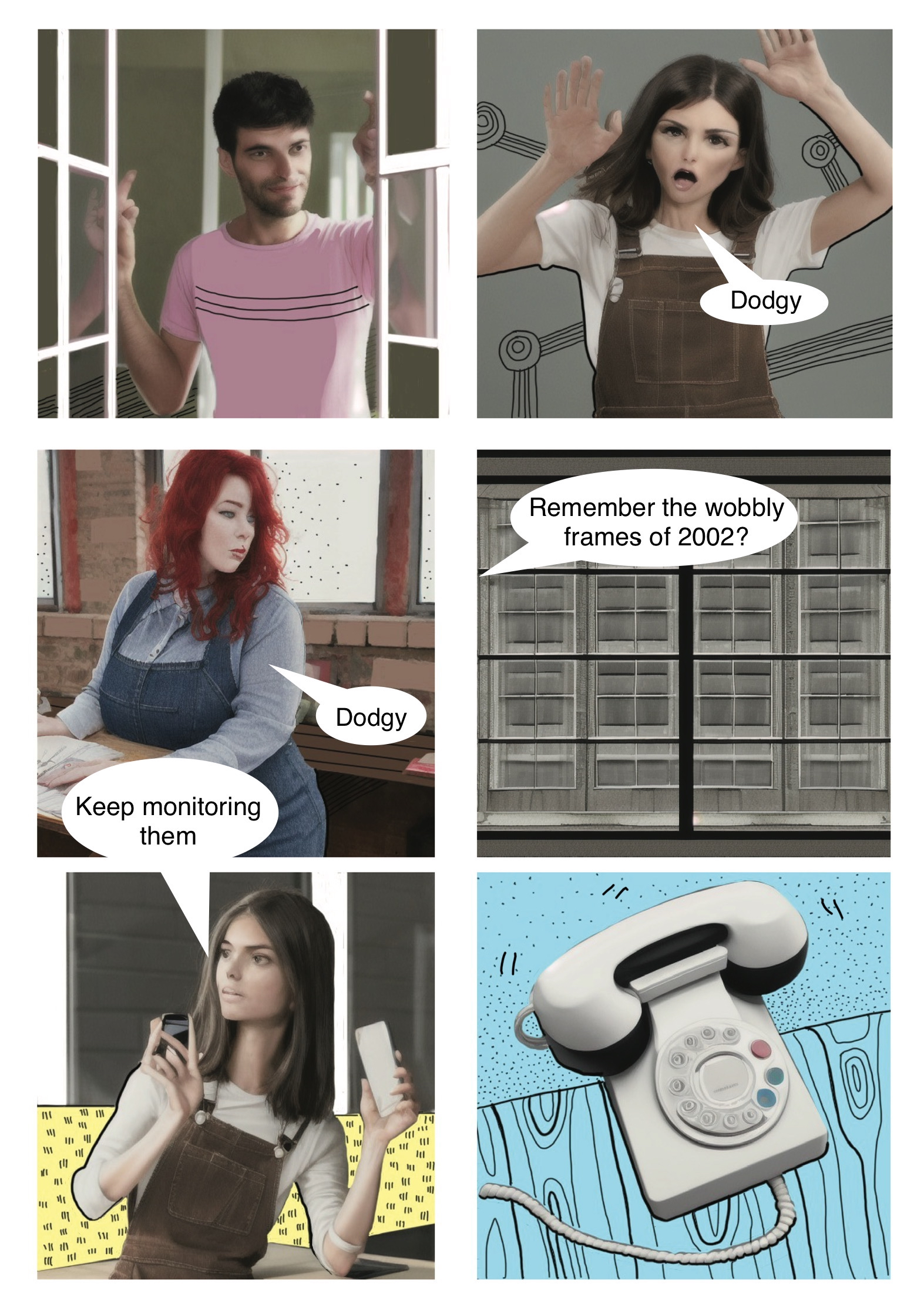


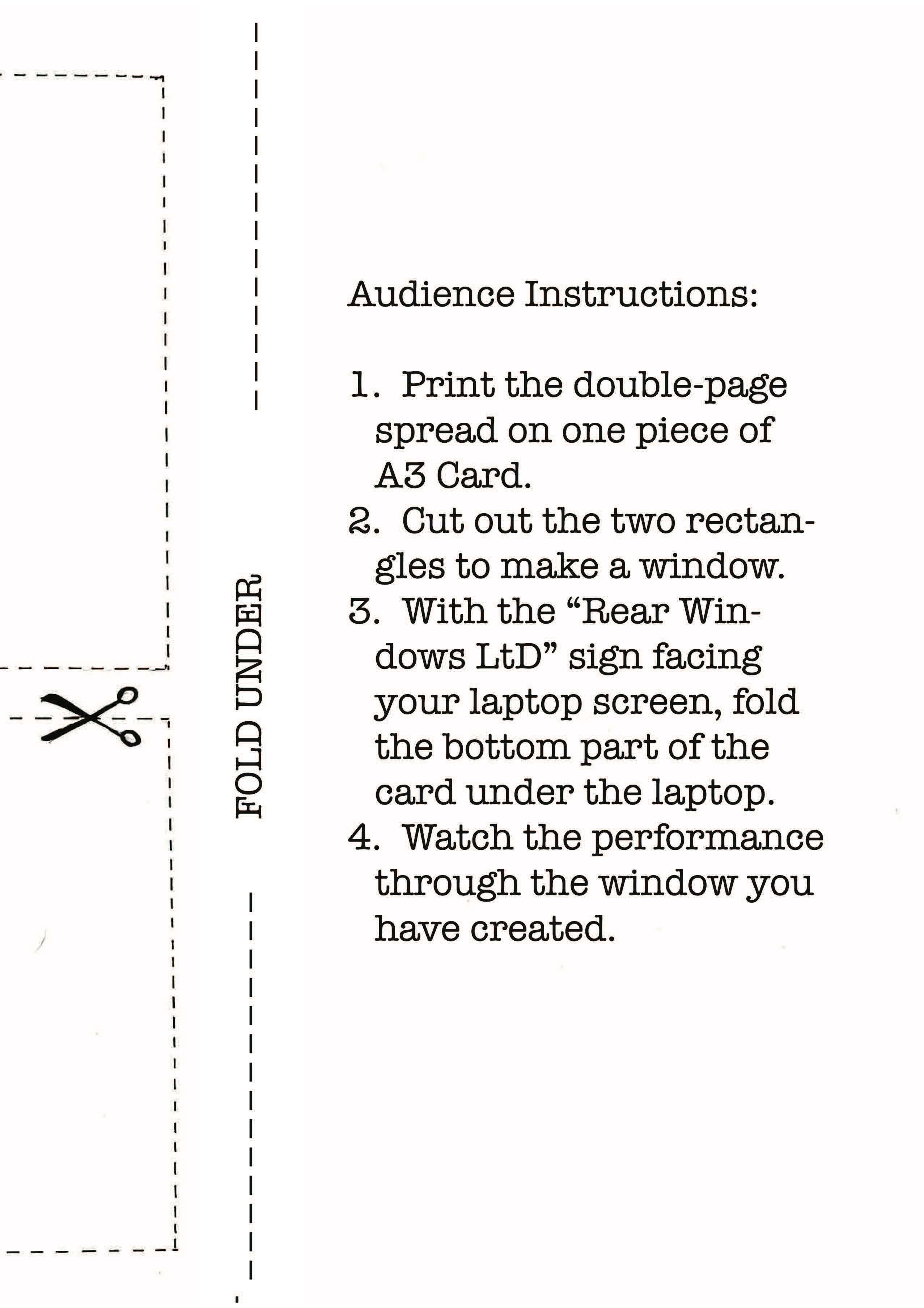


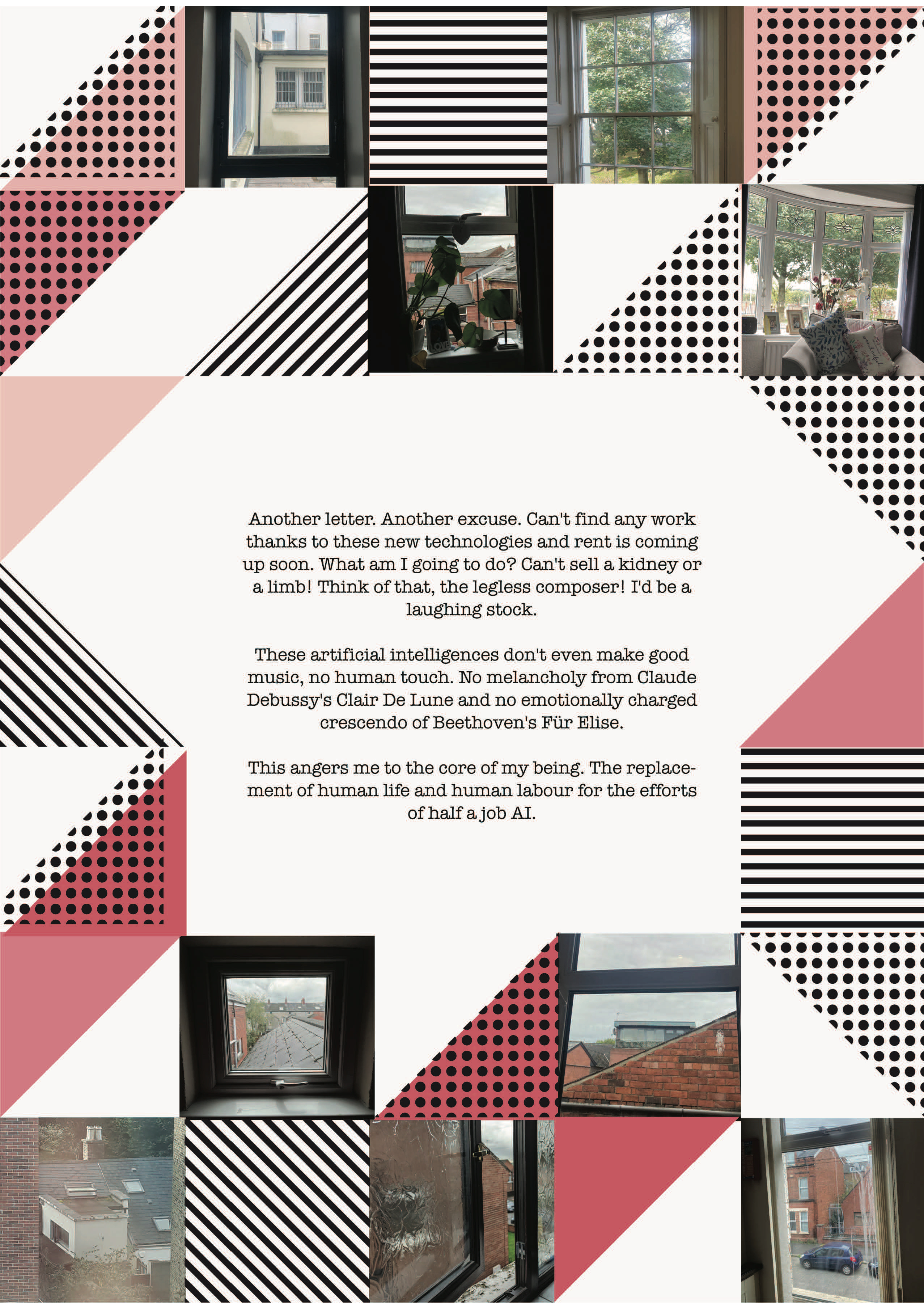
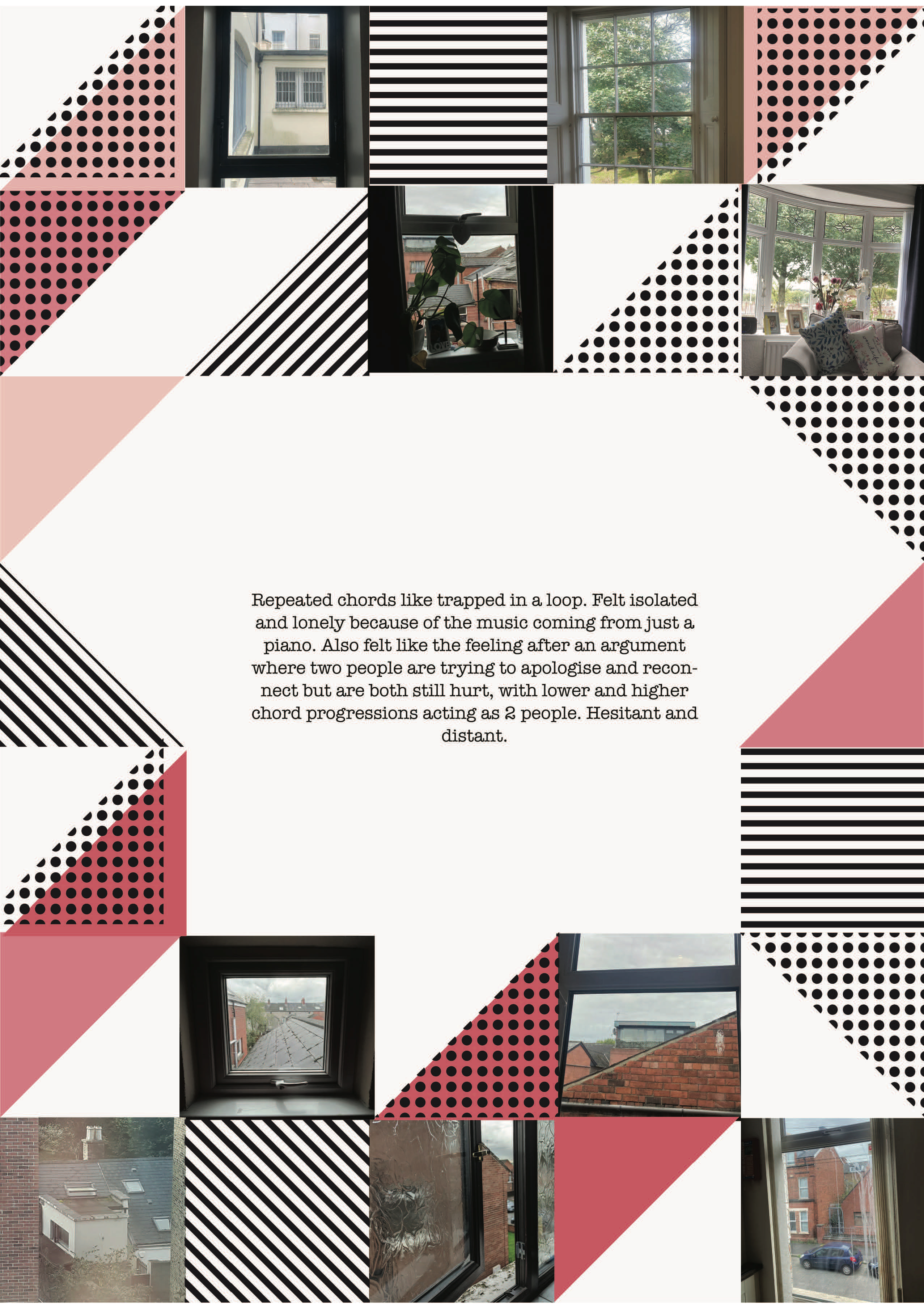
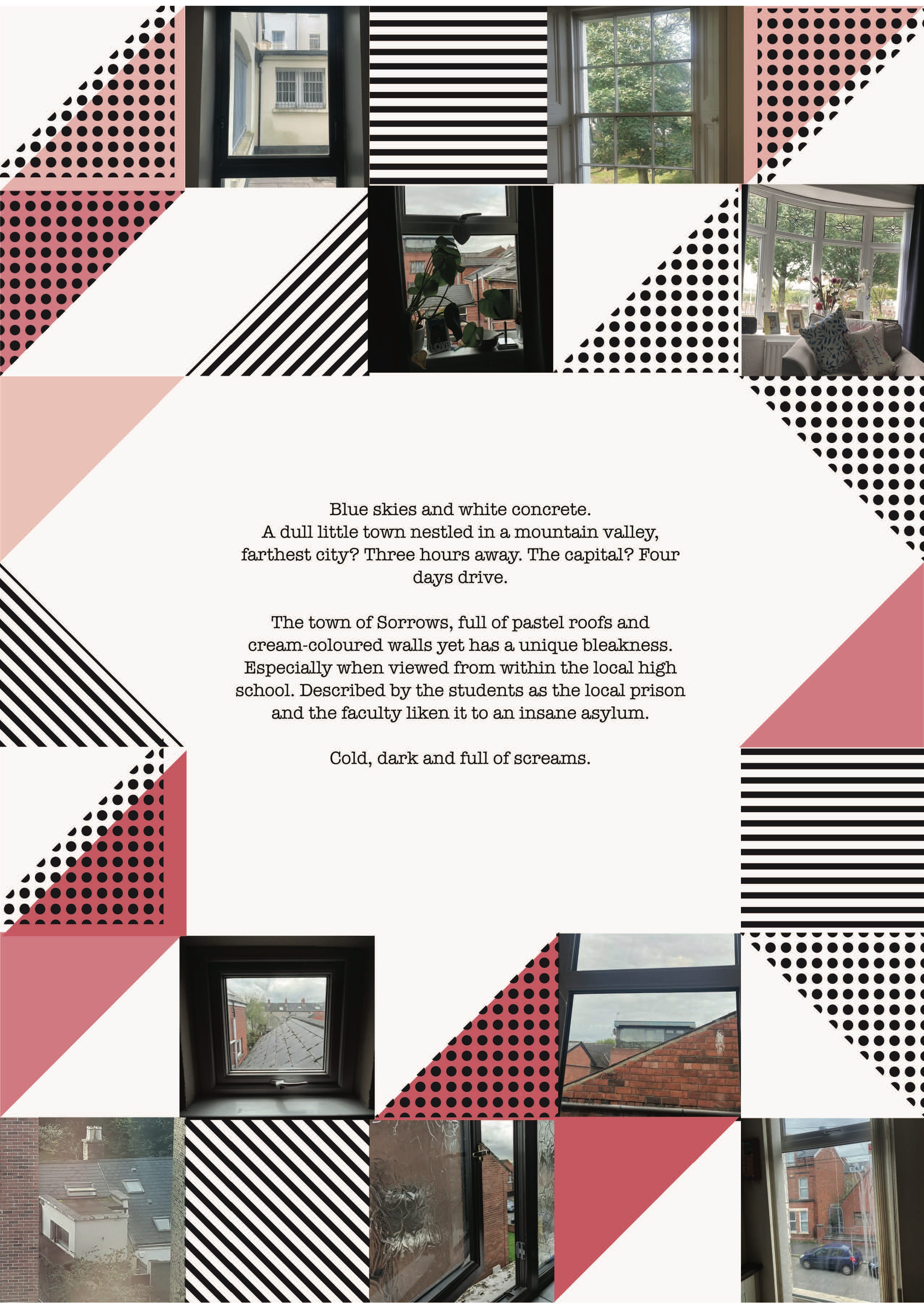

Inspiration for the programme came from “The accident did not take place” and “99 Way to Tell a Story”. Both texts consider how the exact same story changes when either the perspective shifts or the visual aesthetic is altered.
 Image: The accident did not take place
Image: The accident did not take place
Image: 99 Ways to Tell a Story
Public Engagement Workshops
The various aspects of the play were co-produced through a series of public engagement workshops with school and university students. For example, in relation to the programme, participants were asked to imagine the contemporary lives of the minor characters from Hitchcock’s production and film their interpretations through a window. In other workshops participants, wrote music and poetry related to themes from our script. Some of these were included in the three different acts, for example Bev, Janice and the Composer share a poem made by one of the participants and Act 2 contained examples of windows photographed by workshop attendees and their reflective writing.
Experiments & Outtakes
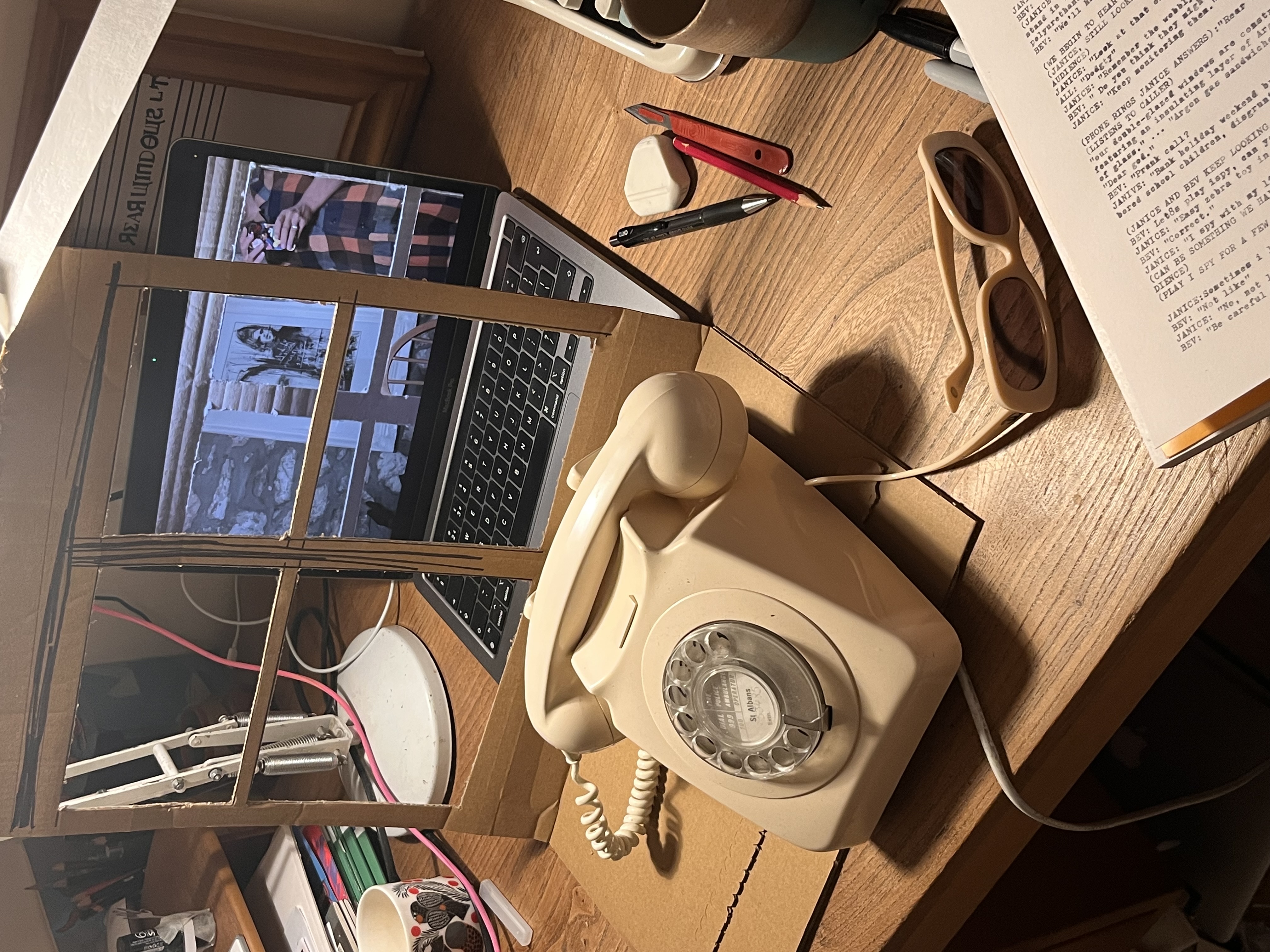


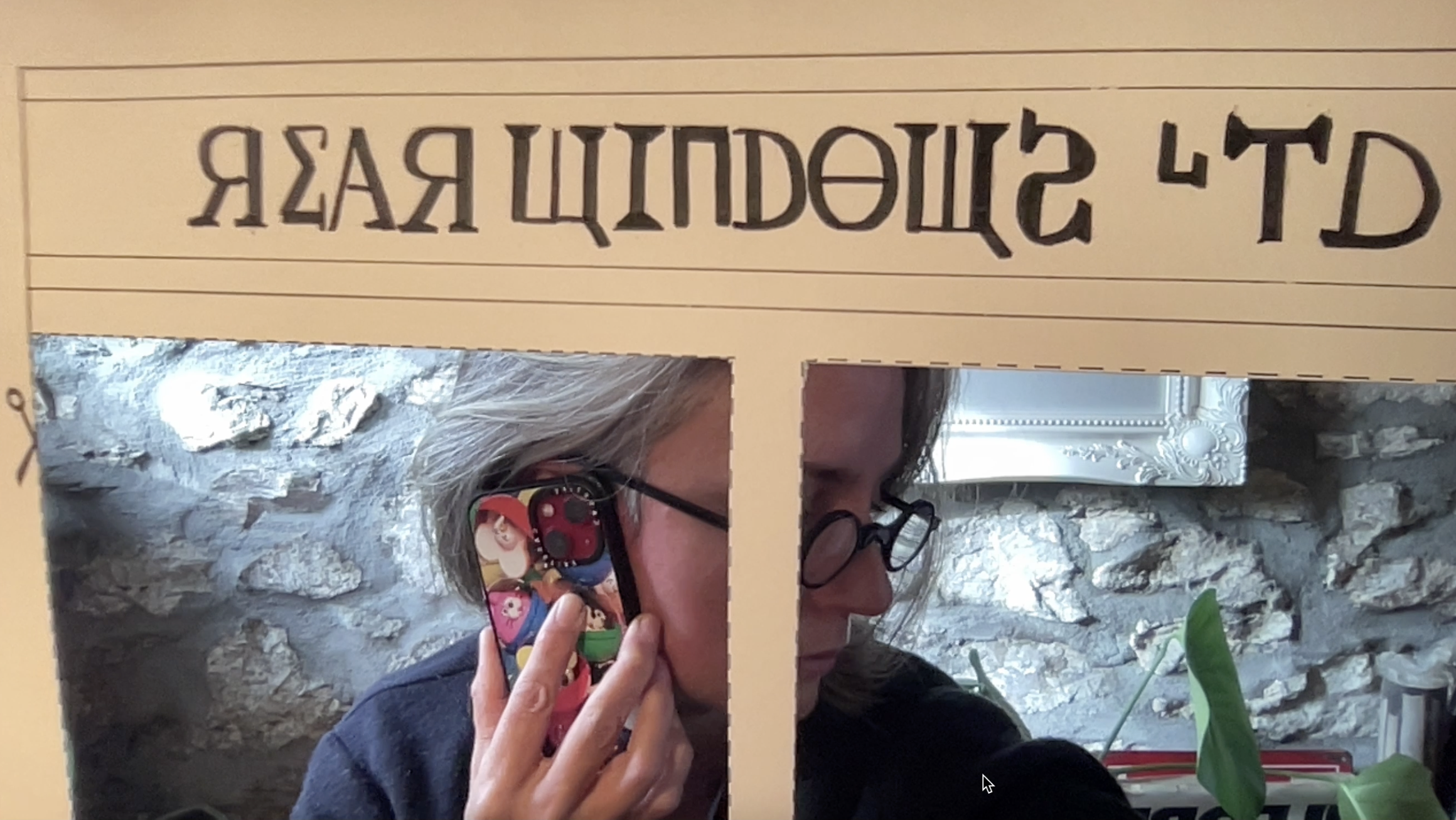
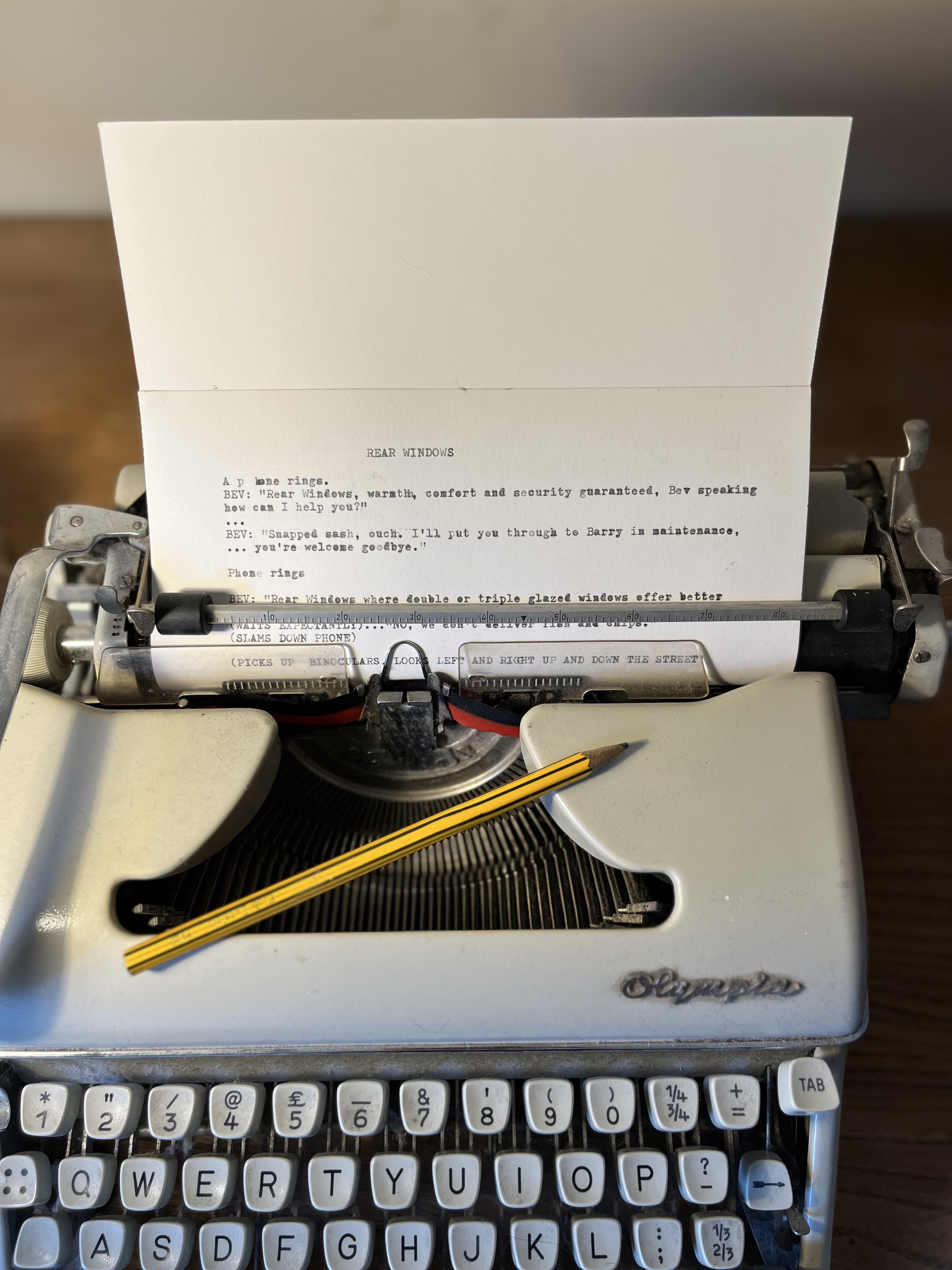
Related Talk
Dare, E. Moore, P., Seaton, Z. and Yamada-Rice, D. (2023) AI & Creativity- Friend or Foe? Belfast International Arts Festival, Ulster University, 28th October 2023.

